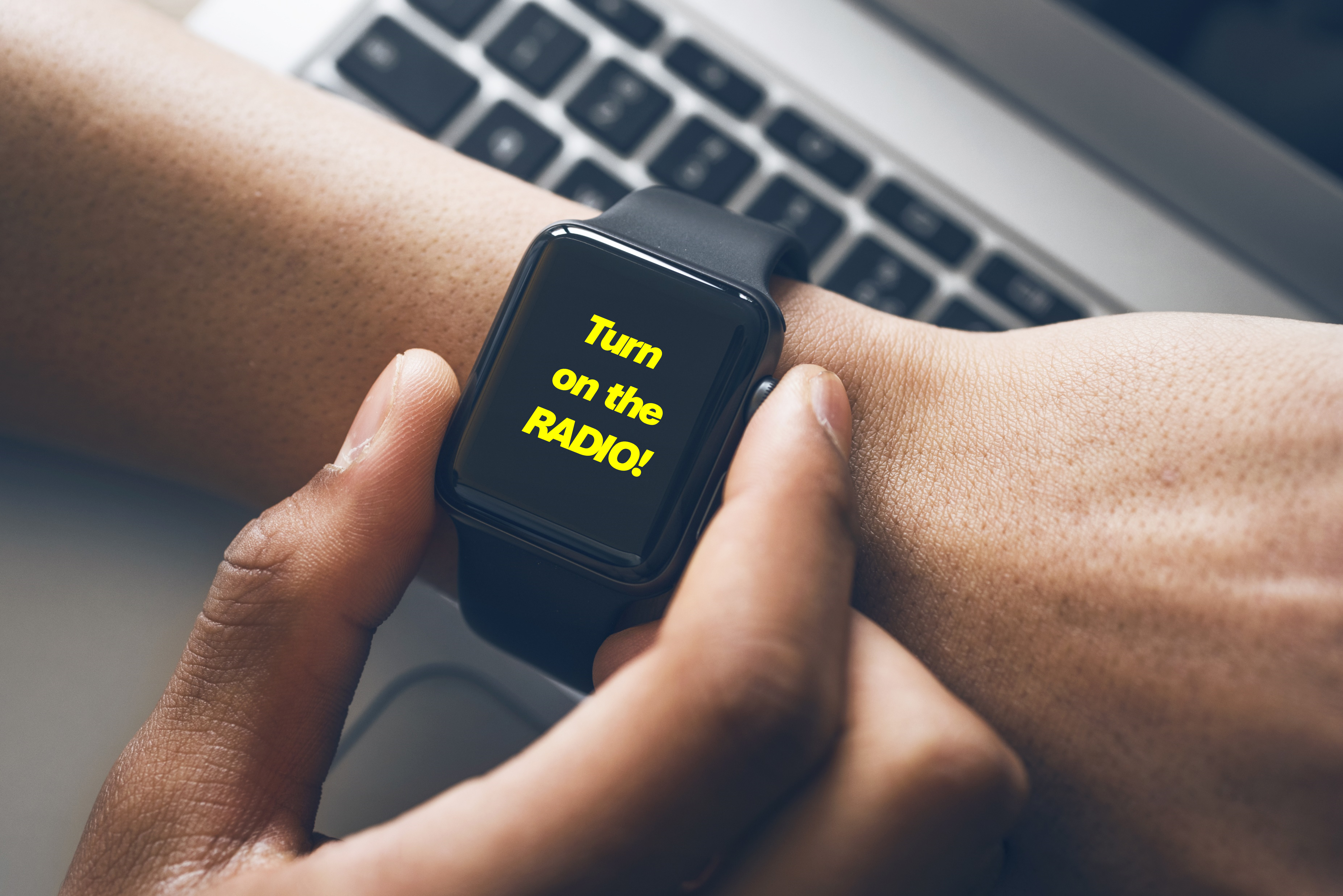
I first started noticing it at CES a decade or so ago. We love to track ourselves – our own personal progress as well as comparing ourselves to “the other kids.” Whether it’s the way we work out or listen to music, our personal metrics have never been more important.
In just a few days, Techsurvey 2024 will launch throughout the U.S. as it has done every January for the past 20 years. And once again, we will be tracking pretty much everything – streaming, smart speakers, in-car radio listening, and even how work from home levels may be changing.
Each year, we spend questionnaire time looking at the levels of gadget acquisition – do our core radio listeners own AirPod-like devices, smart TVs, connected cars, and VR headsets? On the list again this year are smartwatches and fitness trackers. After years of languishing near the top of our Media Usage Pyramid, nearly three in ten (29%) of our consumers own a smartwatch, now at an all-time high. Millennials are especially conscious about “knowing their numbers.” Overall, tracking ourselves – our fitness, our health metrics – has never been more important and easily accessible.
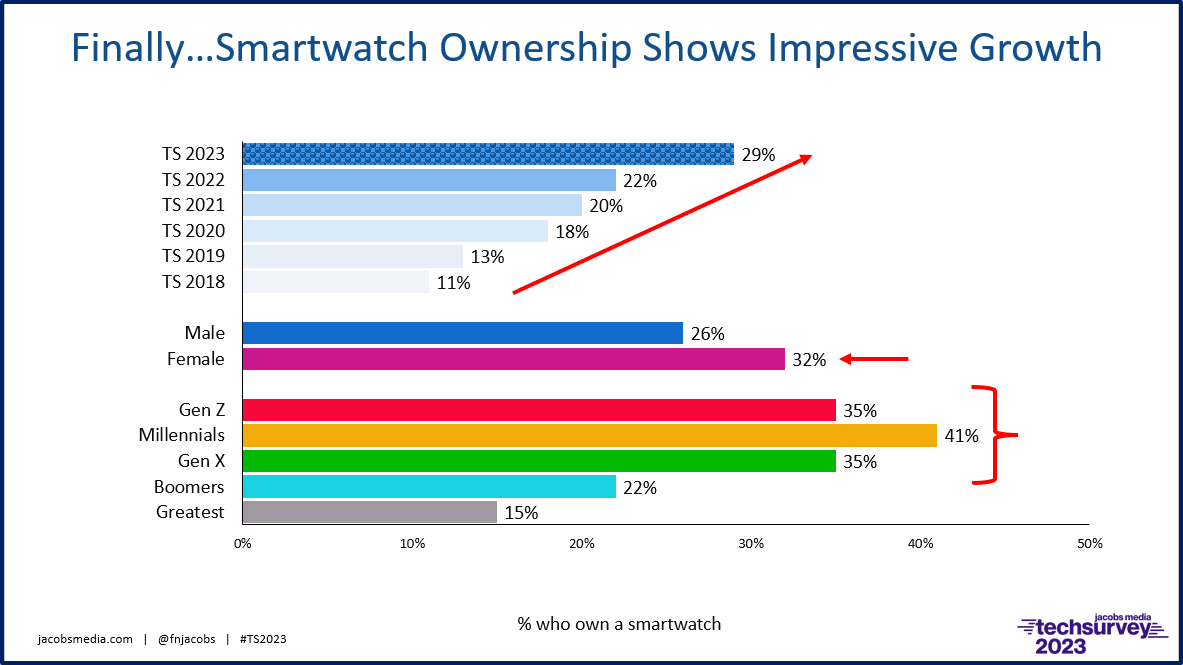
We don’t need a doctor to tell us our heart rate, blood pressure or EKG results. There’s an app for that. Need to keep up with your steps? It’s on our phones and our watches any time we want to keep up with our fitness metrics.
So, we shouldn’t be surprised how “Spotify Wrapped” has not just taken off, but has spawned several other comparisons with the products and services we use throughout the year. In case you don’t know what this is, Spotify has provided usage metrics to its users for the past 7 years now, a simple presentation that shows how our music listening stacks up with millions of other streaming music lovers.
For Spotify, it is more than a clever look at one’s music tastes – it has become a viral marketing campaign. Its subscribers live to not just check out their own consumption patterns, but share their metrics all over social media. For Spotify the brand, subscriber marketing is akin to word-of-mouth – the stuff that drives net Promoter Scores higher. And as “Wrapped” becomes an annual tradition, Spotify’s customer base anticipates its release each year. It truly is the December gift that keeps on giving.
And of course, its catchy. Apple Music, YouTube Music, the Audacy app, and other platforms provide similar end-of-year summary features. While these may pale in comparison to “Spotify Wrapped,” they’re all out of the same gene pool. We like when the data is about us – we’re the stars of our own shows.
Here’s a screen shot from Apple Music’s “Replay.” According to TechCrunch, users get their top 100 songs as part of the service. And unlike “Wrapped,” they can access “Replay” all year long.
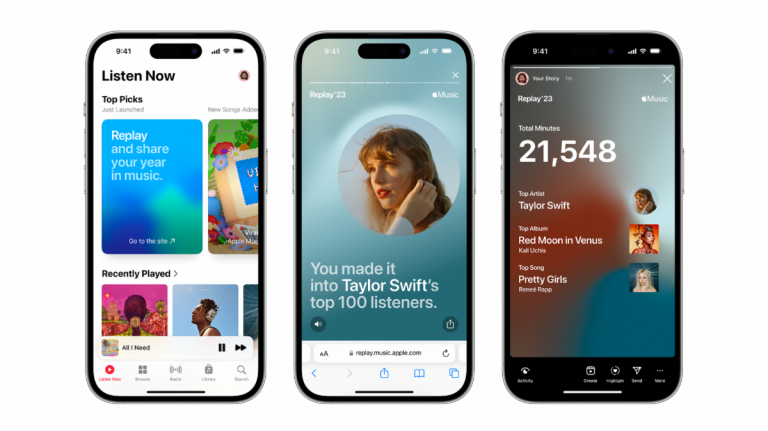
Not surprisingly, iHeart isn’t being left behind with their “Replay ’23” version of this end-of-year summaries. Note the breakdown in the graphic below. (Also note the State Farm sponsorship.)
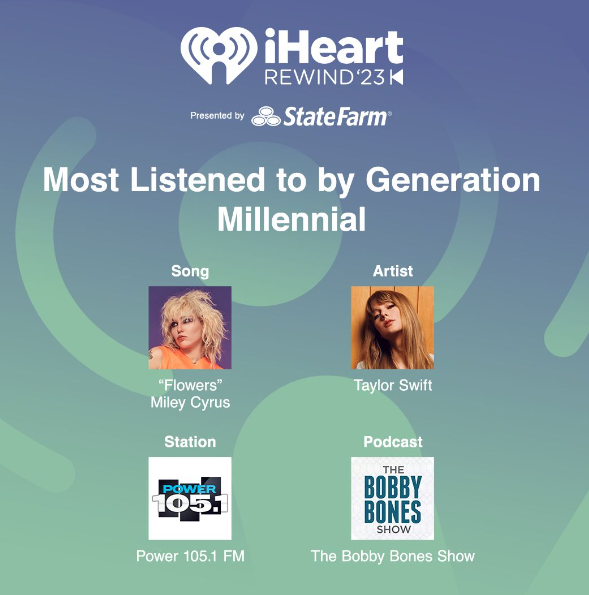
Reddit is getting on this “year in review” bandwagon with their “Reddit Recaps,” used to track their 70 million daily users. And that massive group participates in 100,000 sub-reddit communities.
Maybe it’s telling that according to Social Media Today, the third most-viewed Reddit community of 2023 is called “mildly infuriating.” You can catch up on everyone’s annoyances here.
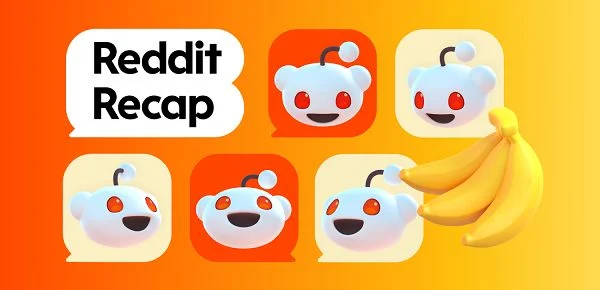
Even newspapers – thanks to digital readership – are getting into the annual recap act. Given that Jeff Bezos is its owner, we shouldn’t be surprised the Washington Post is well down this path, thanks to a feature called Newsprint.
A story in MediaPost last month explained how these subscriber recaps are “social first,” gifting active readers with videos featuring messages from “their most-read journalists.” That’s right – the Post is capitalizing on the power of its proprietary data to personalize its brand with this customized piece of content.
WaPo’s head of product, Jessica Gilbert, explains it this way:
“We wanted to bring Post bylines to life for our subscribers, so we recorded more than 100 videos with our Post journalists to thank them for reading The Post and making it part of their daily lives.”
Thank you @JStein_WaPo for writing good stuff. pic.twitter.com/OEmSnyL9WC
— Ansel Lundberg (@ansellundberg) December 23, 2023
Just imagine radio being able to do the same thing. Think about how radio listeners might talk about their favorite morning show and personalities, the hours they spend listening, and how many times they change stations on an average day.
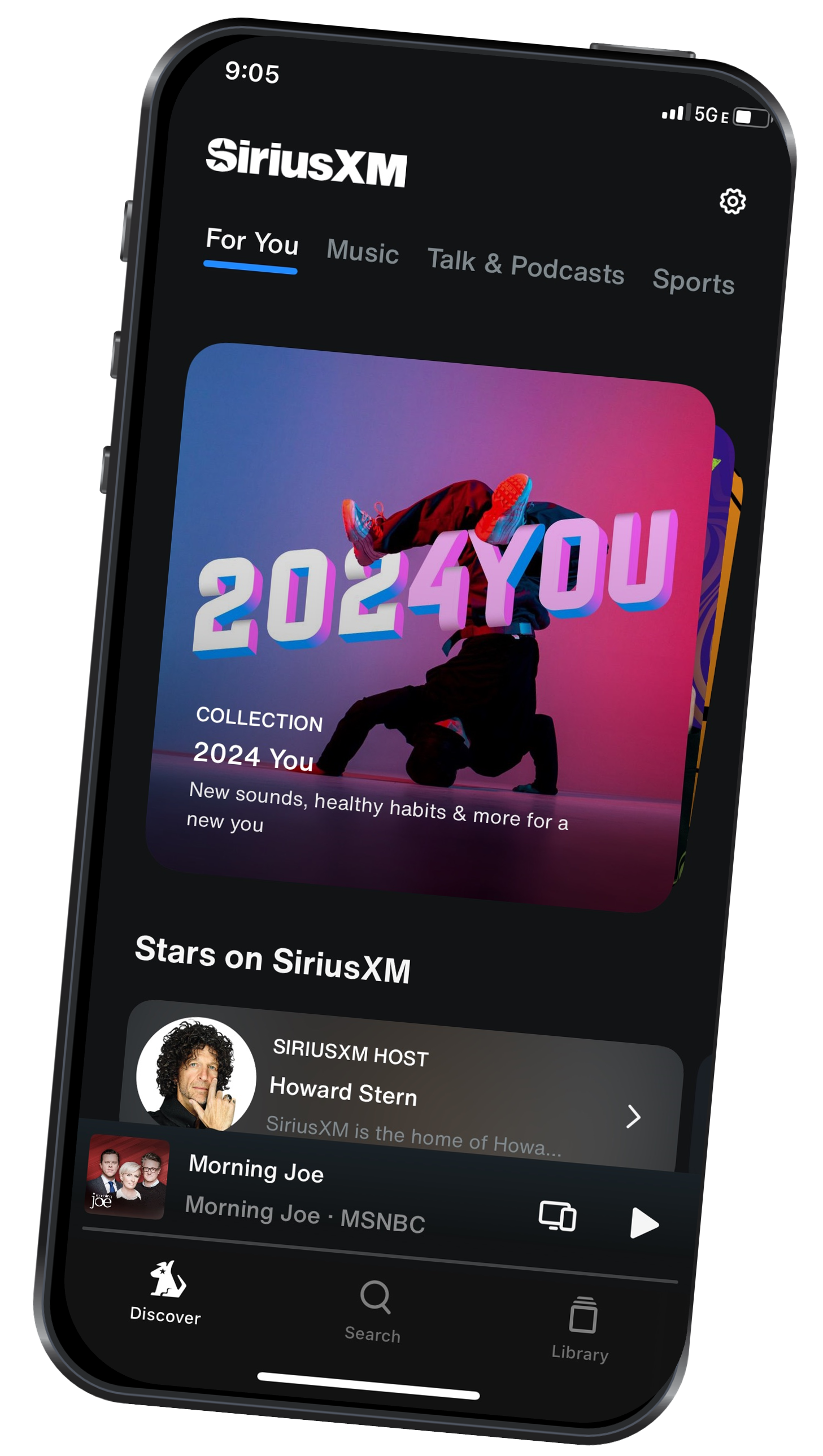 Maybe that’s part of the calculus behind SiriusXM’s brand new app, now making its way into our smartphones and tablets. There’s a lot that’s new on the SXM “Next Generation” platform this holiday season. Many of the big changes are discussed in a recent story in Variety by Todd Spangler.
Maybe that’s part of the calculus behind SiriusXM’s brand new app, now making its way into our smartphones and tablets. There’s a lot that’s new on the SXM “Next Generation” platform this holiday season. Many of the big changes are discussed in a recent story in Variety by Todd Spangler.
There are new features galore – channel and music discovery, new channels, a greater emphasis on personality (now that’s notable). They’re also offering SXM for $9.99/month as a come-on to try the service. Even Howard Stern showed up their press event in Manhattan in November.
But the big deal is that SXM is going all-in on their new streaming platform. For more than two decades, the Sirius and XM brands have been about satellite radio. And while you can still listen that way, streaming SXM content through their thoroughly redesigned mobile app is where the company is now firmly committed.
After years of flailing and suffering through the reality that most of their TSL is taking place in cars, the brain trust at SXM is trying mightily to get on the same page as Spotify, YouTube, and everyone else – streaming.
Sure, satellite delivery is still effective and efficient, but it misses too many users, especially younger consumers who will gladly pay for streaming subscriptions but not one that emanates from the heavens above. After untold millions of investment in satellites, SiriusXM is now committed to streaming – its spoken word, music, sports, and podcast content.
Now, hopefully you’ve made the connection with broadcast radio’s plight because it’s very similar. Take “satellite” in the past couple paragraphs of this post and replace it with “terrestrial.” Yes, towers and transmitters function just fine. But for many Americans, radio listening mostly takes place in cars (yup, just like SXM), as regular radios vanish from homes and workplaces. And as connected cars continue to offer exponentially more choices that are easier and easier to access, it’s not hard to see how the wind is blowing for both satellite and broadcast radio.
With a new logo, I bet we’ll hear a lot more use of the SiriusXM brand (abbreviated to the more simple “SXM”) while the term “satellite radio” will diminish greatly. Why keep reminding people there’s only the old way to access their content when they’d rather move their legions of users over to the stream? SXM is going “all in” on their stream.
greatly. Why keep reminding people there’s only the old way to access their content when they’d rather move their legions of users over to the stream? SXM is going “all in” on their stream.
That sets them up for their own version of “Wrapped” – a look back at the year with their hundreds of channels…or streams. What was my most listened to channel, genre, and SXM personality? Did Howard factor into my SXM listening? And which personality did I spend the most time with? (That person will likely provide me with a “personal” greeting.) In other words, SXM will join the platforms providing us with our customized content footprint, a way to reward us for paying the monthly fee and reimagining a subscriber. And of course, I’ll be able to tell all my friends and followers on Facebook, Instagram, and X all about it.
It can’t be long before Netflix starts compiling the same info. Are we into documentaries, dystopian TV series, rom-com movies, or what? Notably, this year they published something we’ve never seen before – a complete ranker of every show, movie, documentary, and piece of content in their vast system. In the “Netflix: What We Watched,” you get a raw, transparent look at viewing for the first six months of this year. There’s a lot missing – time periods, demographics – in short, lots of the stuff that would make this data more meaningful. But it’s a sign the biggest video streamer is entering the data tracking game.
If you didn’t see it late last year, you can read Netflix’s release and download the full report here. It’s not pretty – essentially a spreadsheet – but it lists all of Netflix’s content: 18,000 titles, ranked for the first six months of 2023. Now that Netflix is running a lower-priced subscription option that includes commercials, info on who’s watching and in what numbers become important to their continued sustainability:
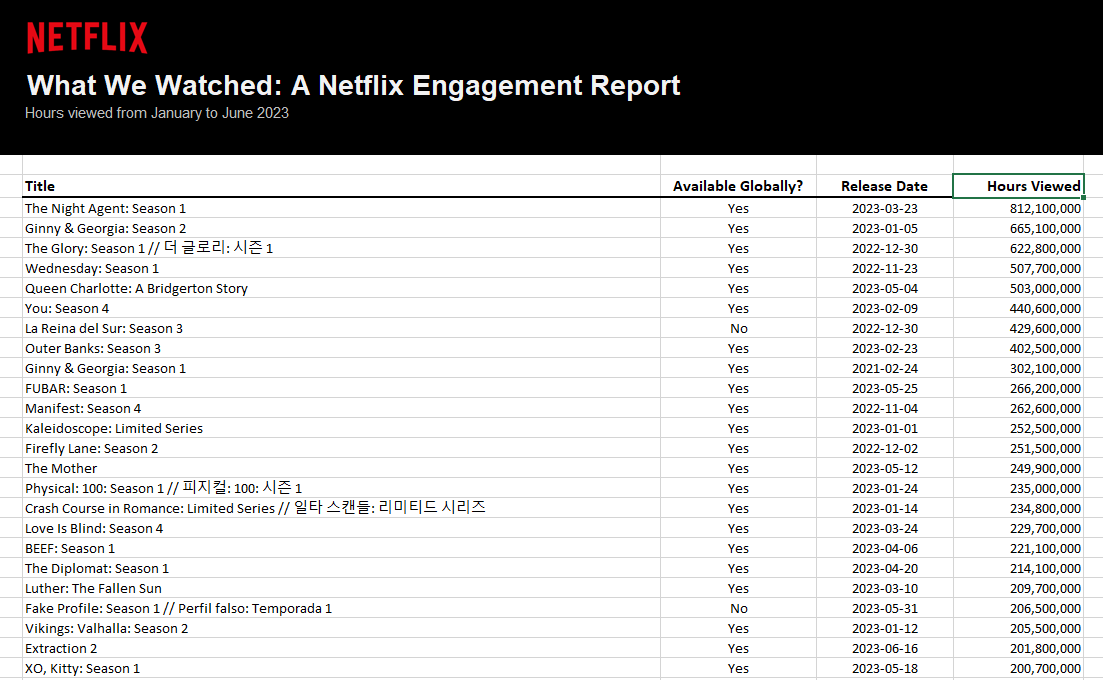
Strangely, Netflix didn’t mirror Spotify by creating household and individual user profiles for the content we consumed on the channel throughout the last 12 months. It might be a bit terrifying to learn just how much time we spend video streaming, not to mention some of the weird stuff we watch. (Maybe there should be an “opt out” option on certain content genres.)
I don’t know about you but I would love to see my viewing for the year, whether it’s intriguing or terrifying. And for all the video streaming platforms trailing Netflix, why wouldn’t the leaders in the category want to one-up their competitors by developing their own version of “Wrapped,” making them first to differentiate their brand from other competitors?
As more and more of us turn our attention inward – to the “ME” factor, these annual looks at our activities at the end of each year inevitably say something about us as people, as consumers of various forms of culture. As we learned during the early iPod days, “guilty pleasure songs” seemed to be on everybody’s playlists. In fact, Ford used that uncomfortable fact to market their Focus and their dashboard infotainment systems all the way back in 2008:
It’s a similar phenomenon with “Wrapped” and its would-be imitators. Of course, you expect to see your go-to artists up at the top of your digital heap of songs streamed. But it may be your “guilty pleasures” and other oddities that make this customized feature so compelling.
Despite the competition, Spotify leads the league in annual year-end tracking, thanks to kicking off this initiative back in 2016. This head start has given Spotify several years to determine what works, what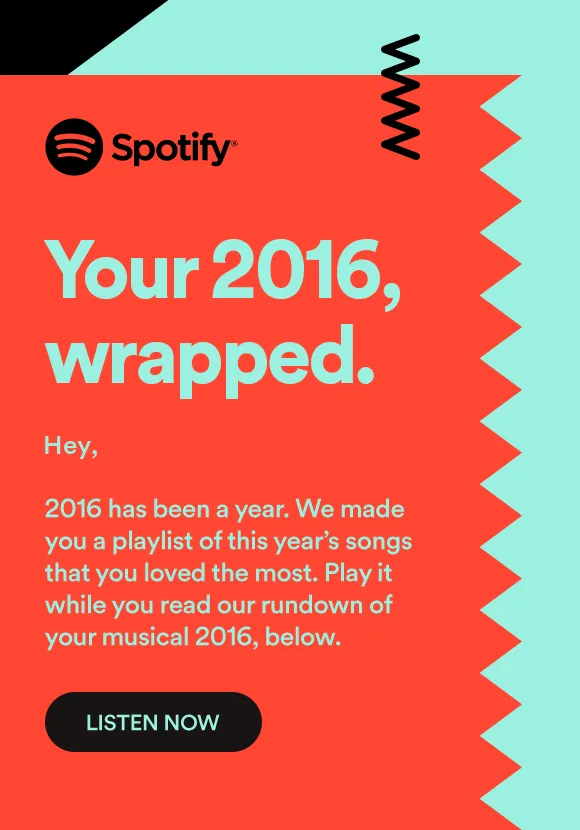 surprises and delights, as well as creating a “sandbox” with which to experiment with the “Wrapped” concept.
surprises and delights, as well as creating a “sandbox” with which to experiment with the “Wrapped” concept.
For artists, it’s been an incredibly useful tool. As I blogged late last year, premium artists like Taylor Swift are now using “Wrapped” to deliver video greetings to fans who stream her music with great frequency. By inserting her greeting into an individual’s “Wrapped” package, Swifties can get happily surprised by seeing their heroine as part of their annual tracking.
And how ’bout this?
The Beatles put “Wrapped” to work this year, helping connect their fans to valuable (and pricey!) merch they could offer exclusively to to their legions of Beatlemaniacs.
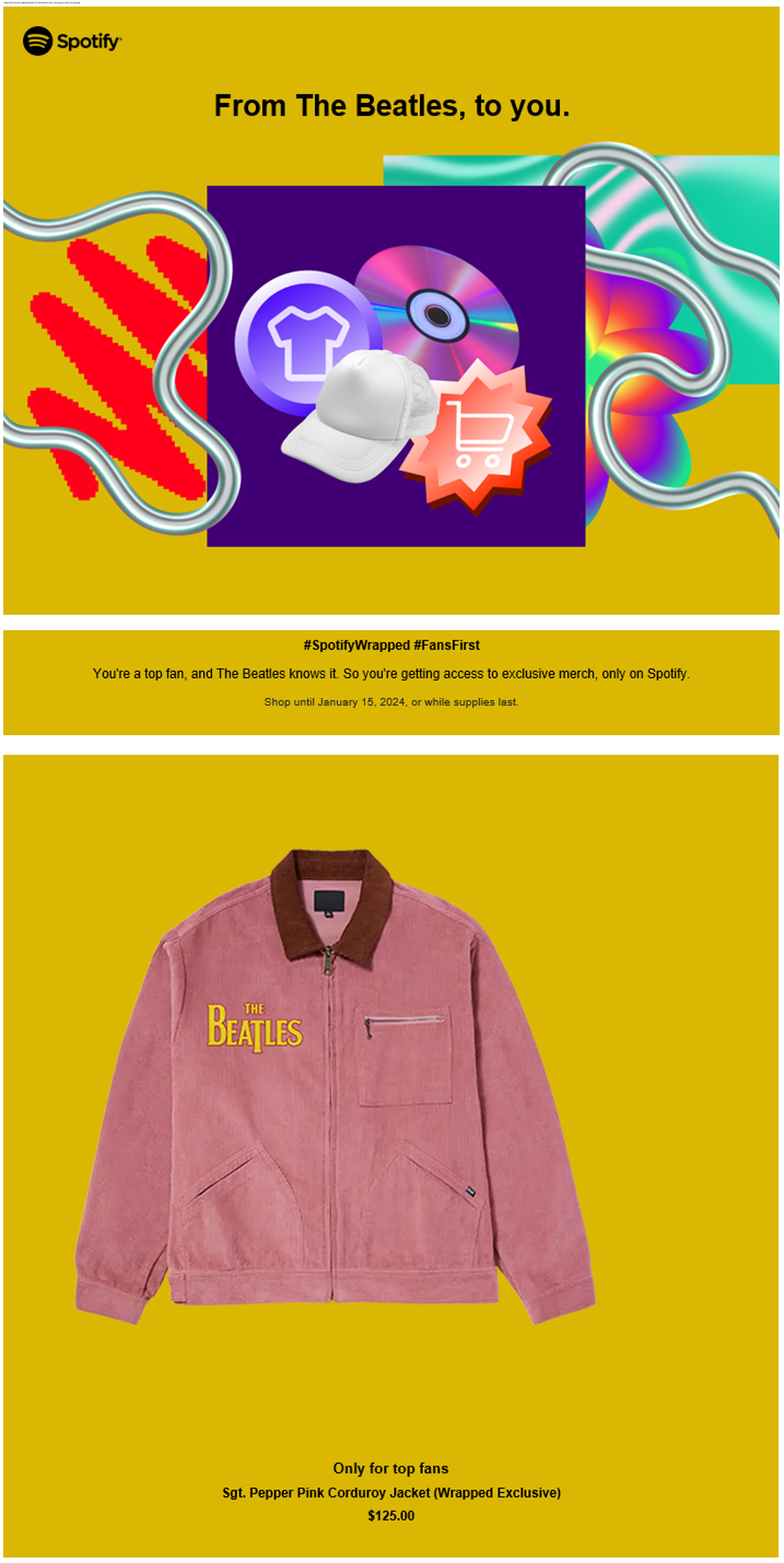
Between stroking fans and offering direct messaging to individuals who can become club members, buy music, attend more concerts, Spotify is helping artists connect with some of their most ardent fans.
But “Wrapped” doesn’t stop there. Consider a presentation they put together for advertisers. It includes 10 insights about their audience, many of which we radio programming types can benefit from, as well as our counterparts in sales.
our counterparts in sales.
There are some fascinating takeaways about the power of comedy, podcasts, and video, all of which connect to make streaming rich and dynamic.
Spotify also points out the value of music that accompanies health and wellness activities, like physical fitness and working out. There are some interesting takeaways we’ll be looking at when we visit CES 2024 this weekend. Every year, we see new technology related to fitness that combine music and other emotional elements.
But of course, it was #3 that jumped out at me, a Spotify insight that everyone programming a “classic” radio station ought to consider:
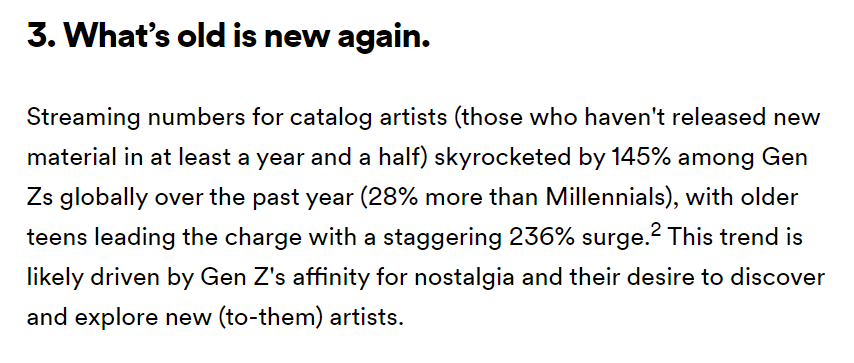
You can download “Spotify Wrapped 2023 – For Advertisers” here.
And if imitation is the sincerest form of flattery, and parody is a sure sign it’s a trend, consider this version of “Wrapped” taken from the pages of DC Comics. Those fertile minds who write the imaginative stories that have captured the attention of America’s youth for decades take “DC Wrapped” to a whole new, warped place.
View this post on Instagram
Who knew Superman was a Classic Rock fan? Now all we have to do is get a few meters into the Metropolis metro so Clark, Lois, Jimmy, and Perry can participate in the ratings book.
And then comes broadcast radio. For obvious reasons, radio stations cannot participate in this activity that may, in fact, be a trend: helping us track our own personal behaviors and habits. Yes, consumers listening to their favorite stations via their streams may be available, but tracking it back to individual users is well outside the realm of possibility – at least for now. And Nielsen and other ratings data cannot provide the types of reports we are now regularly receiving from Spotify and other media providers.
This echoes back to a theme you may have run across in this blog post last year:
The need for radio broadcasters to digitize their audiences.
It’s something radio has been painfully slow to do. Of course, the broadcast delivery of content takes radio out of the game to an extent. But as SiriusXM now shoves stacks of chips in the streaming arena – and away from their trusted satellites – you can clearly understand their calculus.
This phenomenon should stimulate radio stations to ask for an email address in exchange for the stream. And it ought to encourage radio to finally get serious about its email database efforts. Many of the insights Spotify and other brands can now deliver in packages like “Wrapped” are exactly what’s missing from radio sales and marketing.
And for the first blog post of 2024, that’s a wrap!
Thanks to Dave Beasing, Chris Brunt, Bill Jacobs, and Mike Stern.
- For Radio, The Perils Of Rebranding - May 30, 2025
- There’s No Failure In Radio - May 29, 2025
- It’s Not An Innovation If You Can’t Make It Work – And Last - May 28, 2025




In a radio universe far, far from here, I imagine an HD Radio receiver in which the moribund “tagging” technology has been repurposed to enable the end-user (listener) to download periodically (perhaps to a thumb drive?) data showing what stations and what artists and tracks have been played since the previous download. Maybe broadcasters would offer him an incentive to upload that information to them for accumulation and validation (with on-air shoutouts to the most loyal listeners). Oh, what a wonderful world, Fred.
Indeed it is, John. The insights and data are there, at least in part, for the taking. Thanks for the comment and HNY to you.
Excellent post, Fred. Thought-provoking. It occurs to me that, with a little innovation and investment, radio could play the “me” game too. With a higher and higher proportion of AM/FM listening going to streaming, online radio listening can theoretically be tracked and preferences passed back to the listener (not to mention aggregate data to advertisers). An all-industry initiative like Radioplayer in other markets feels like the best route, if U.S. broadcasters can similarly learn to play nicely with others.
That’s a big IF, Jeff, as you know. But your point is well taken. Streaming could provide the pathway to gleaning audiencee insights that benefit listeners, advertisers, and radio broadcasts themselves.
I did get a year-end report from iHeart on what stations I streamed.
(Drumroll):
I listened to one station for less than one minute.
So yeah, I listened to a lot of Spotify.
However, I use it for work.
Thus, Spotify’s year-end analysis of me…
Is nowhere close to the actual me.
I would imagine that’s alos the case for many families that Ilike it or not) share Spootify accounts.
Marty, I think a lot of these “wrapped” analyses don’t do justice to our true tastes and habits for reasons like the ones you mention. And hopefully, most take them with that grain of salt.
The line about Taylor Swift using “Wrapped” to deliver greetings to fans reminded me of a VERY old memory–one I may not have thought of again otherwise. Do you remember when radio stations actually got special copies of singles that included the station’s call letters somewhere in the song?? For the life of me I can’t think of an example right now, but it seems I do remember that happening a couple of times. I’m thinking KHJ in Los Angeles had a couple. Or maybe I’m just thinking I remember that. Anyway, IF I’m remembering that correctly, I guess that would be the old school way of doing a shout out to fans of a particular station…and if I’m not, well, time for my Geritol and bran flakes. (Now, where’s my shawl?)
What’s old is new again, right? It underscores how some of Taylor’s basic audience building is very old school and fundamentally sound.
Ha! I remember Tom Petty singing to Los Angelenos,
“It don’t really matter to me,
“I can listen to KMET…”
Ha, indeed! I didn’t know about that one, but that’s great!
It might also be good for broadcasters to make their online offerings more elaborate. I’m skittish about mandating registration for basic online listening, but registration would be more attractive if it allowed for such things as voting on music or additional playlist info.
Eric, I share your concerns. So make it optional but make it worthwhile for listeners to sign-up (perks, benefits, inside info, etc.). Your point to bake in additinal benefits is IMO the way to go.
Great thoughts, Eric. Will broadcasters buck up to make it worthwhile? The numerous “clubs” of the past have all but evaporated due to a lack of attention and rewards, mainly because the staff was let go. Even today, some of the station sites I subscribe to think it’s appropriate to send me a $10 coupon for a new car.
Aa I think is becoming obvious, Dave, is the need for vallue and also even that element of surprise. I think its safe to say that for radio in these areas, we’ve got a long way to go.
It’s 2024, Fred. I like what I like. I don’t like what I don’t like. Does getting data on where my preferences land in the universe make me cool or a geek? Seems that these days people are proud if they fall in either category. Taylor and Miley fall in the “commercial” or “mainstream” mold-proving that shared experiences do matter. It’s just that there are dozens more different types of “mainstream” than ever with the myriad choices these days. Happy New Year -please keep up the great work, and keep us thinkin’.
Dave, thanks for the comment and for engaging on this. I believe the larger trend – tracking our behaviors and activities whether it’s the music we listen to or how many flights of stairs we walked today – is very much in the fabric of many people representing multiple geneerations. As you say, by this point I certainly know what I like, and I don’t have the need to exceed yesterday’s number of steps taken. But for many consumers – mostly younger – this is part of what keeps them engaged and motivaated As alwaays, I appreciate your additions to my posts. Hawppy New Year to you and yours.
Tracy G Allen Song Them Breeds
I’m late to the game on this but thanks for the excellent post, Fred. During an Xperi webinar I attended late last year, they showcased the technology they are rolling out for HD radio which could easily make this a possibility for broadcasters with “like” buttons and direct analytics already in the works. It may not be individualized (yet) but it would allow a station to easily generate this data for their entire audience or even a targeted area (ie. “The folks in Jonestown sure love this hit from John Doe”). I was impressed by the possibilities IF they can achieve critical mass in the dashboard.
Frank, the Xperi data they pull right off the head unit of their AutoStage platform is imporessive. And as you suggest, if there are enough vehicles driving around with it installed, radio broadcasters will have an entirely new view of our world. We will be visiting Joe D’Angelo and the Xperi team next week at CES, and we’re looking forward to lelarning about what’s new and what’s next. thanks for the comment.